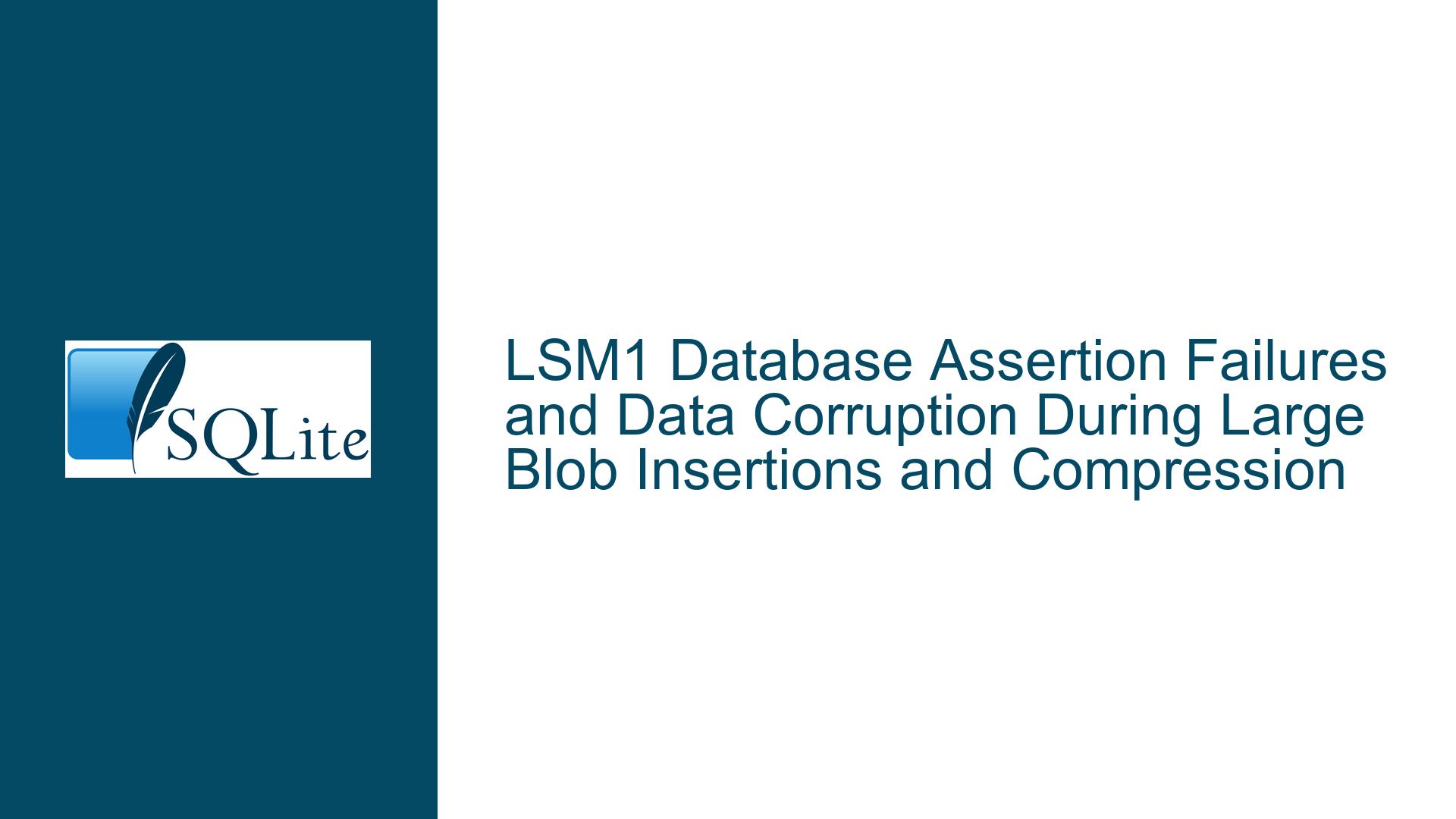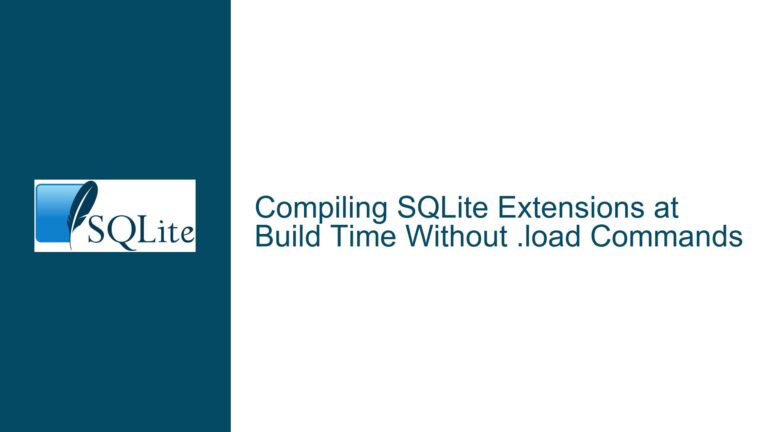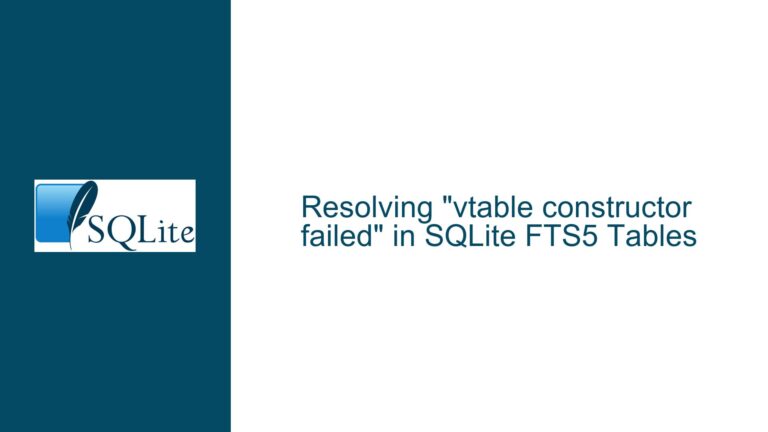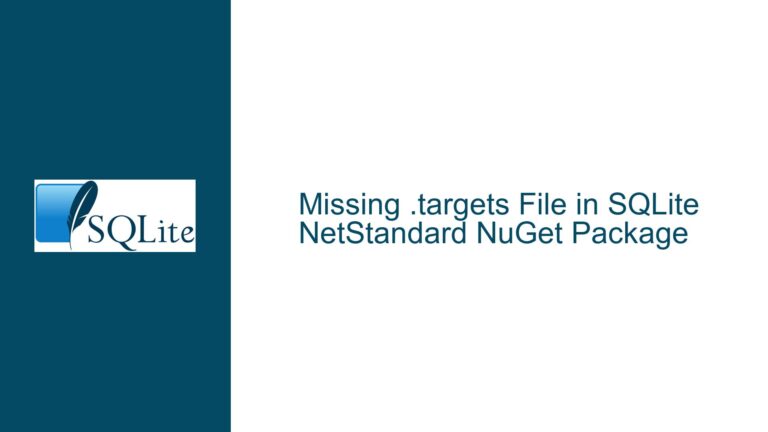LSM1 Database Assertion Failures and Data Corruption During Large Blob Insertions and Compression
Issue Overview: Assertion Failures and Data Corruption in LSM1 During Large Blob Insertions
The core issue revolves around assertion failures and data corruption in the LSM1 database engine when inserting large blobs (512 KB and 1 MB) into the database, particularly when the database size exceeds 2.0 GB. The problem manifests in two distinct scenarios:
Assertion Failure in
fsPageGet: This occurs when inserting blobs of 512 KB size, specifically around the 4027th blob out of 5000. The assertion failure happens in thefsPageGetfunction, which is part of the file system layer of LSM1. The failure is triggered during the process of persisting the blob data, leading to an abrupt termination of the program.Assertion Failure in
fsAppendData: This occurs when inserting blobs of 1 MB size, specifically around the 2013th blob out of 5000. The assertion failure happens in thefsAppendDatafunction, which is responsible for appending data to the database file. Similar to the first issue, this also results in program termination.
Both issues are reproducible on both Linux and Mac OS Ventura, and they occur when the database size exceeds 2.0 GB. The issues are exacerbated when compression hooks are enabled, even though the hooks in this case are trivial and do not perform any actual compression (they simply copy data using memcpy).
Possible Causes: Underlying Issues in LSM1’s Handling of Large Blobs and Compression Hooks
The root causes of these issues are multifaceted and involve several layers of the LSM1 database engine:
Integer Overflow in Page Management: The first issue (
fsPageGetassertion failure) is likely caused by an integer overflow in the page management logic. When the database size exceeds 2.0 GB, the internal page counters may overflow, leading to incorrect page references. This is particularly problematic when dealing with large blobs, as the engine may attempt to access invalid or out-of-bounds pages.File System Layer Limitations: The second issue (
fsAppendDataassertion failure) suggests a limitation in the file system layer’s handling of large data appends. ThefsAppendDatafunction may not be designed to handle the continuous appending of large blobs, especially when the database size grows beyond a certain threshold. This could lead to incorrect file offsets or buffer overflows.Compression Hook Interactions: Although the compression hooks in this scenario are trivial, their presence introduces additional complexity in the data flow. The hooks may interfere with the normal operation of the file system layer, especially when dealing with large blobs. This could exacerbate existing issues in the page management and file system layers.
Database Optimization and Truncation: The issues also appear to be related to the database’s optimization and truncation processes. When the database is not optimized, the internal structures may become fragmented, leading to incorrect page references during data insertion. Additionally, the truncation process during database disconnection may attempt to access invalid pages, causing assertion failures.
32-bit vs 64-bit Integer Handling: The issues may also stem from the improper handling of 32-bit and 64-bit integers in the LSM1 codebase. When dealing with large databases, 32-bit integers may overflow, leading to incorrect calculations and invalid memory accesses. This is particularly evident in the
seekInLevelfunction, where a 32-bit integer (iPtr) is used to store a page number, which may exceed the maximum value that can be represented by a 32-bit integer.
Troubleshooting Steps, Solutions & Fixes: Addressing Assertion Failures and Data Corruption in LSM1
To resolve these issues, a combination of code fixes, optimizations, and best practices should be implemented:
Fix Integer Overflow Issues: The first step is to address the integer overflow issues in the page management logic. This involves replacing 32-bit integers with 64-bit integers where necessary, especially in functions that handle page numbers and file offsets. This will prevent overflow and ensure that the engine can handle large databases without encountering invalid page references.
Enhance File System Layer Handling: The file system layer should be enhanced to handle large data appends more efficiently. This includes optimizing the
fsAppendDatafunction to handle continuous appends of large blobs without causing buffer overflows or incorrect file offsets. Additionally, the file system layer should be tested with databases that exceed 2.0 GB to ensure that it can handle such scenarios without issues.Improve Compression Hook Integration: The integration of compression hooks should be improved to ensure that they do not interfere with the normal operation of the file system layer. This includes validating the data flow when compression hooks are enabled and ensuring that the hooks do not introduce additional complexity that could lead to assertion failures or data corruption.
Optimize Database Truncation Process: The database truncation process should be optimized to handle large databases more efficiently. This includes ensuring that the truncation process does not attempt to access invalid pages and that it correctly handles 64-bit file offsets. Additionally, the truncation process should be tested with databases that have been heavily fragmented to ensure that it can handle such scenarios without issues.
Implement Comprehensive Testing: Comprehensive testing should be implemented to ensure that the fixes and optimizations are effective. This includes testing the database engine with large blobs, large databases, and various compression hooks. The testing should cover both optimized and non-optimized databases to ensure that the engine can handle all scenarios without encountering assertion failures or data corruption.
Update Documentation and Best Practices: The documentation and best practices for using LSM1 should be updated to reflect the fixes and optimizations. This includes providing guidance on how to handle large blobs, large databases, and compression hooks. Additionally, the documentation should include information on how to avoid common pitfalls that could lead to assertion failures or data corruption.
Monitor and Address Edge Cases: Finally, the database engine should be continuously monitored for edge cases that could lead to assertion failures or data corruption. This includes addressing any new issues that arise as the engine is used in different scenarios and with different configurations. By continuously monitoring and addressing edge cases, the engine can be made more robust and reliable.
In conclusion, the assertion failures and data corruption issues in LSM1 during large blob insertions and compression are caused by a combination of integer overflow, file system layer limitations, and improper handling of compression hooks. By addressing these issues through code fixes, optimizations, and comprehensive testing, the LSM1 database engine can be made more robust and reliable for handling large databases and large blobs.






